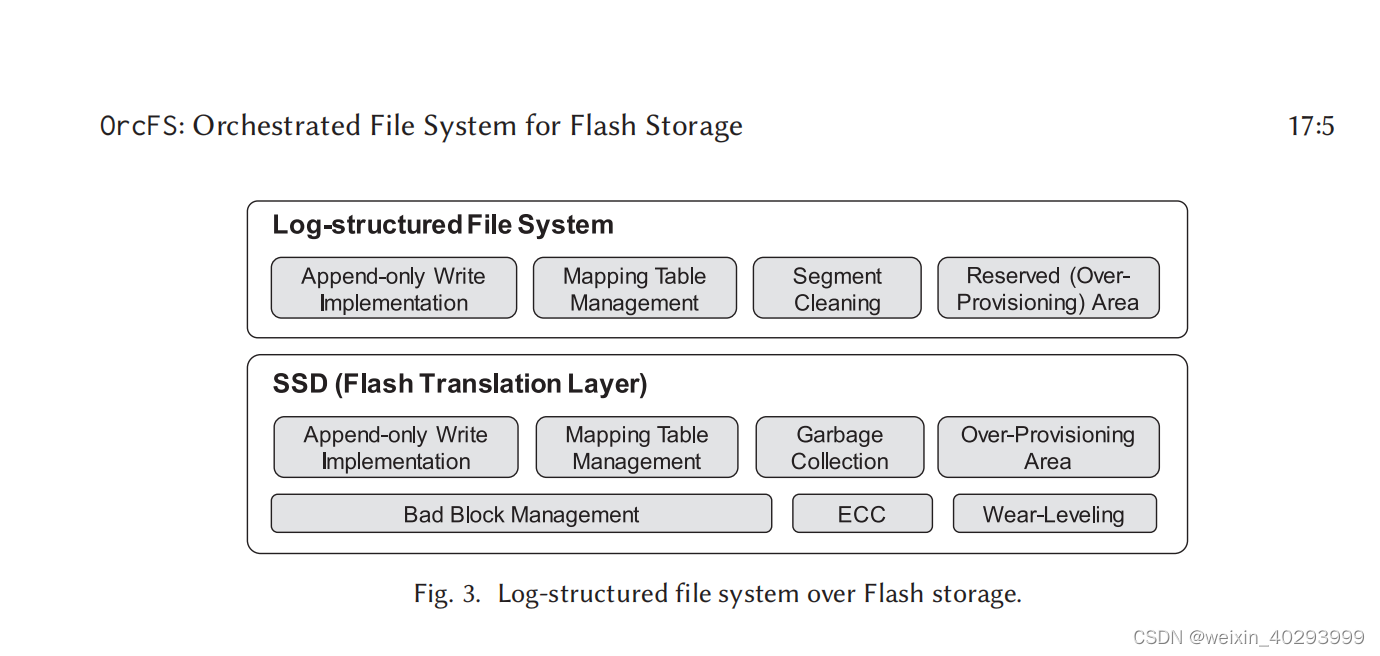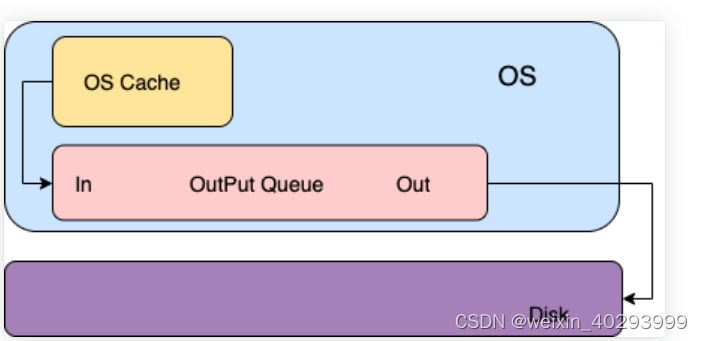【操作系统】在阅读论文:OrcFS: Orchestrated file system for flash storage是需要补充的基础知
在阅读论文:OrcFS: Orchestrated file system for flash storage是需要补充的基础知识
这篇论文是为了解决软件层次之间的信息冗余问题
To minimize the disk traffic, the file system buffers the updates and then flushes them to the disk as a single unit, a segment (e.g.,2Mbyte), either when the buffer is full or when fsync() is called.
 The metadata area consists of the file system super block (FS-SB), checkpoint, segment information table (SIT), and node address table (NAT). The SIT manages the block
The metadata area consists of the file system super block (FS-SB), checkpoint, segment information table (SIT), and node address table (NAT). The SIT manages the block
bitmap of each segment in the data area. The NAT manages the block address corresponding to
each node ID.

一、缓冲#
传统的UNIX实现的内核中都设置有缓冲区或者页面高速缓存,大多数磁盘IO都是通过缓冲写的。
当你想将数据write进文件时,内核通常会将该数据复制到其中一个缓冲区中,如果该缓冲没被写满的话,内核就不会把它放入到输出队列中。
当这个缓冲区被写满或者内核想重用这个缓冲区时,才会将其排到输出队列中。等它到达等待队列首部时才会进行实际的IO操作。

这里的输出方式就是大家耳熟能详的: 延迟写
这个缓冲区就是大家耳熟能详的:OS Cache
二、延迟写的优缺点#
很明显、延迟写降低了磁盘读写的次数,但同时也降低了文件的更新速度。
这样当OS Crash时由于这种延迟写的机制可能会造成文件更新内容的丢失。而为了保证磁盘上的实际文件和缓冲区中的内容保持一致,UNIX系统提供了三个系统调用:sync、fsync、fdatasyn
三、sync、fsync、fdatasync
#include<unistd.h>
int fsync(int filedes);
int fdatasync(int filedes);
int sync();
sync系统调用:将所有修改过的缓冲区排入写队列,然后就返回了,它并不等实际的写磁盘的操作结束。所以它的返回并不能保证数据的安全性。通常会有一个update系统守护进程每隔30s调用一次sync。
fsync系统调用:需要你在入参的位置上传递给他一个fd,然后系统调用就会对这个fd指向的文件起作用。fsync会确保一直到写磁盘操作结束才会返回。所以fsync适合数据库这种程序。
fdatasync系统调用:和fsync类似但是它只会影响文件的一部分,因为除了文件中的数据之外,fsync还会同步文件的属性。
本文来自互联网用户投稿,该文观点仅代表作者本人,不代表本站立场。本站仅提供信息存储空间服务,不拥有所有权,不承担相关法律责任。 如若内容造成侵权/违法违规/事实不符,请联系我的编程经验分享网邮箱:chenni525@qq.com进行投诉反馈,一经查实,立即删除!